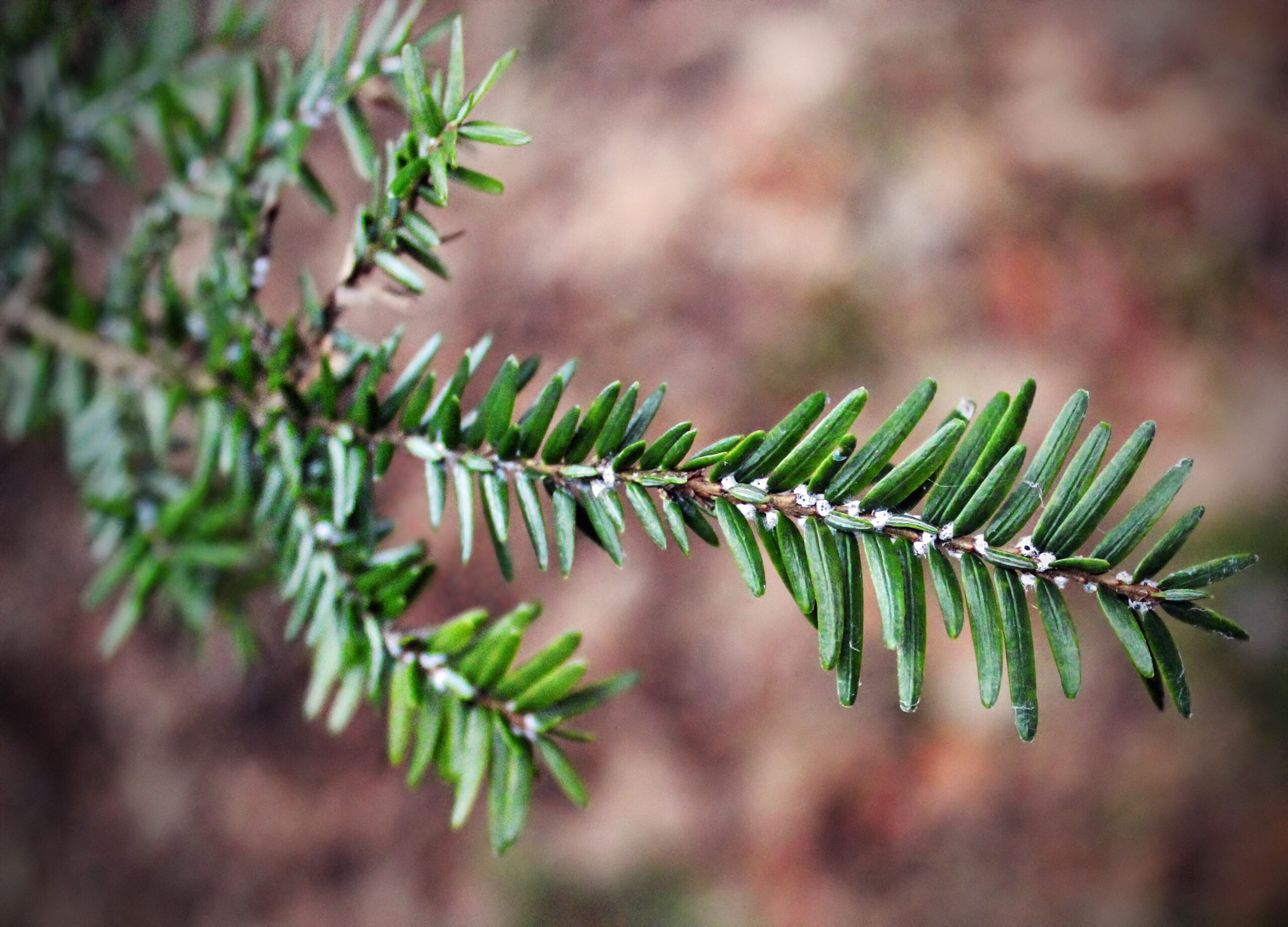Spurred by climate change, invasive species threat looms over northeast U.S.
Global warming tips the scales in favor of invaders in the region
Ethan Freedman • January 15, 2021

A tree infested with the tell-tale white, fluffy egg sacs of the hemlock woolly adelgid, an invasive species spreading through the Northeast U.S. that can kill ecologically important hemlock trees. [Credit: Nicholas A. Tonelli | CC BY 2.0]
The rising ocean isn’t the only thing creeping into the northeast U.S. as the climate changes. New invasive species are also making their way into the region, according to a leading invasive species scientist.
Consider the hemlock woolly adelgid, a tiny sap-sucking pest introduced to the eastern United States from Japan that feeds on hemlock trees. Once, people thought the cold winters in the Adirondack Mountains of northeastern New York would block the millimeter-long bug from moving into the region, says Carrie Brown-Lima, the director of the New York Invasive Species Research Institute. But as the climate has warmed, the insects have now established themselves in the Adirondacks, she says.
The spread of hemlock woolly adelgid threatens hemlock trees and the surrounding forest ecosystem. Similarly, invasive species worldwide, ranging from plants to mongoose to cane toads, have threatened ecosystem stability, often by outcompeting or directly preying on non-invasive species. And plenty of non-native species are now taking advantage of ecological opportunities — such as the warmer temperatures created by climate change — often wreaking havoc on native plants and animals in the process, according to Brown-Lima, who spoke at an Oct. 22 webinar on the topic hosted by the Cary Institute of Ecosystem Studies in Millbrook, NY.
The combination of climate change and species invasions, according to Brown-Lima, is the “perfect storm of global challenges.” Warmer weather presents the most obvious opportunities for invaders, allowing some plants and animals like the southern pine beetle, once present in only the southeast U.S. and parts of Central America, to overwinter in places such as Long Island that were previously too cold to survive, she says.
But warmer weather isn’t the only potential driver of invasions spurred by climate change. Stronger storms and other disturbances could play a role, too. For example, Brown-Lima says that by flattening forests, these storms could create opportunities for invasive plant species to out-compete native ones.
With climate change or other disturbances to an ecosystem, the competitive advantage usually swings to the most flexible plants and animals, explains Cascade Sorte, an ecologist at the University of California Irvine. That’s because, Sorte says, invasive species are often the “jack-of-all-trades types that are able to persist under any kind of conditions. And that should sort of give them a leg up as the climate changes.”
The northeastern U.S. may be a hotspot for species invasions as the climate warms, Brown-Lima says. And indeed, some research has found that northeastern North America is likely to be a future global hotspot for some invasive species.
To that end, scientists are trying to predict which species are likely to invade and which are likely to cause the most harm as climate change continues, Brown-Lima says. Halting or even merely slowing these invasions is almost impossible once an exotic species is fully established in a new habitat she says, but adds that if conservationists are able to predict which species will show up they can focus on removing these species before they become widespread.
Nonetheless, even with these interventions, climate change will still offer new opportunities for invasive species to establish themselves in the Northeast, Brown-Lima says.
“We’ll have to really pick our battles,” she says.